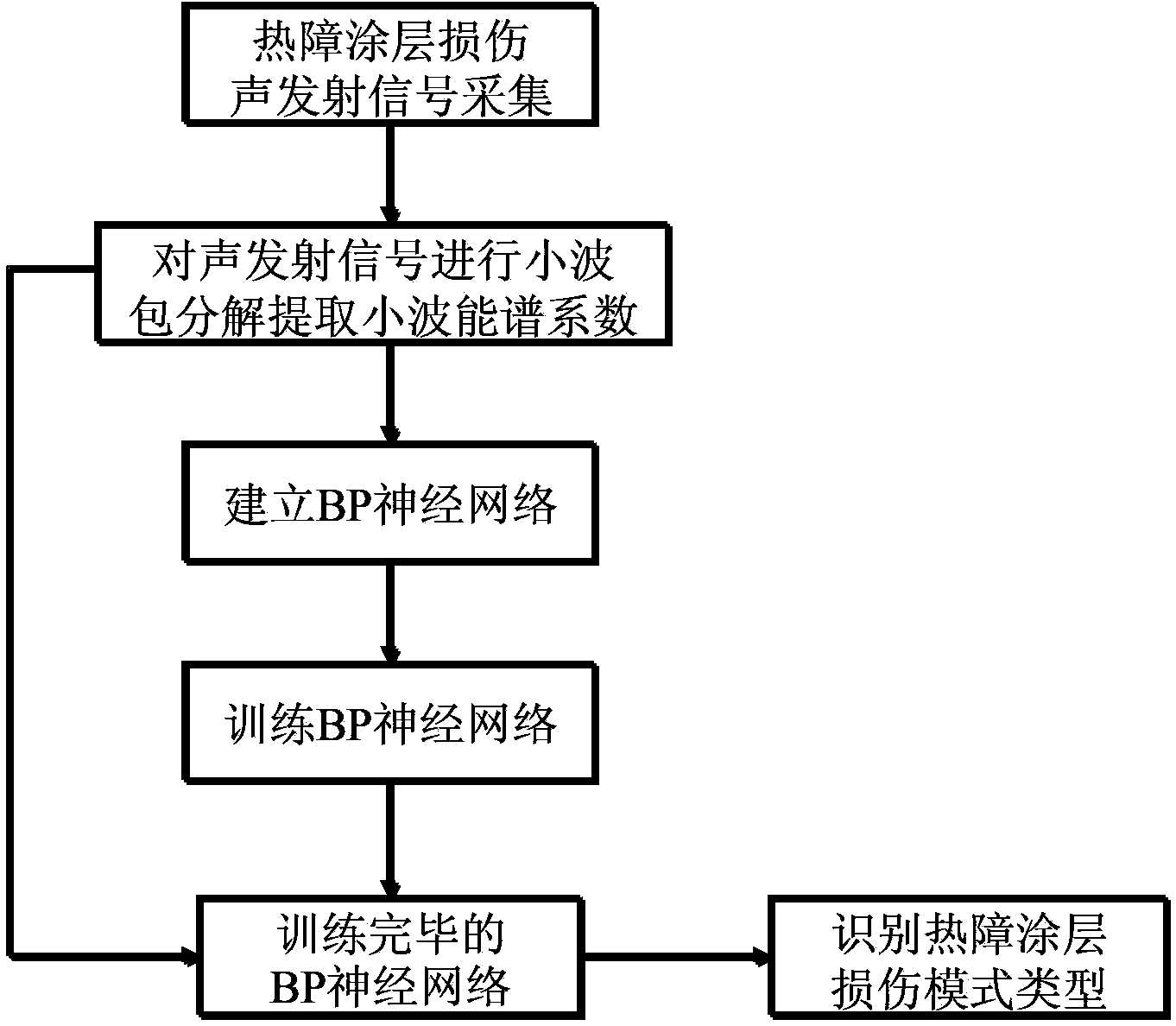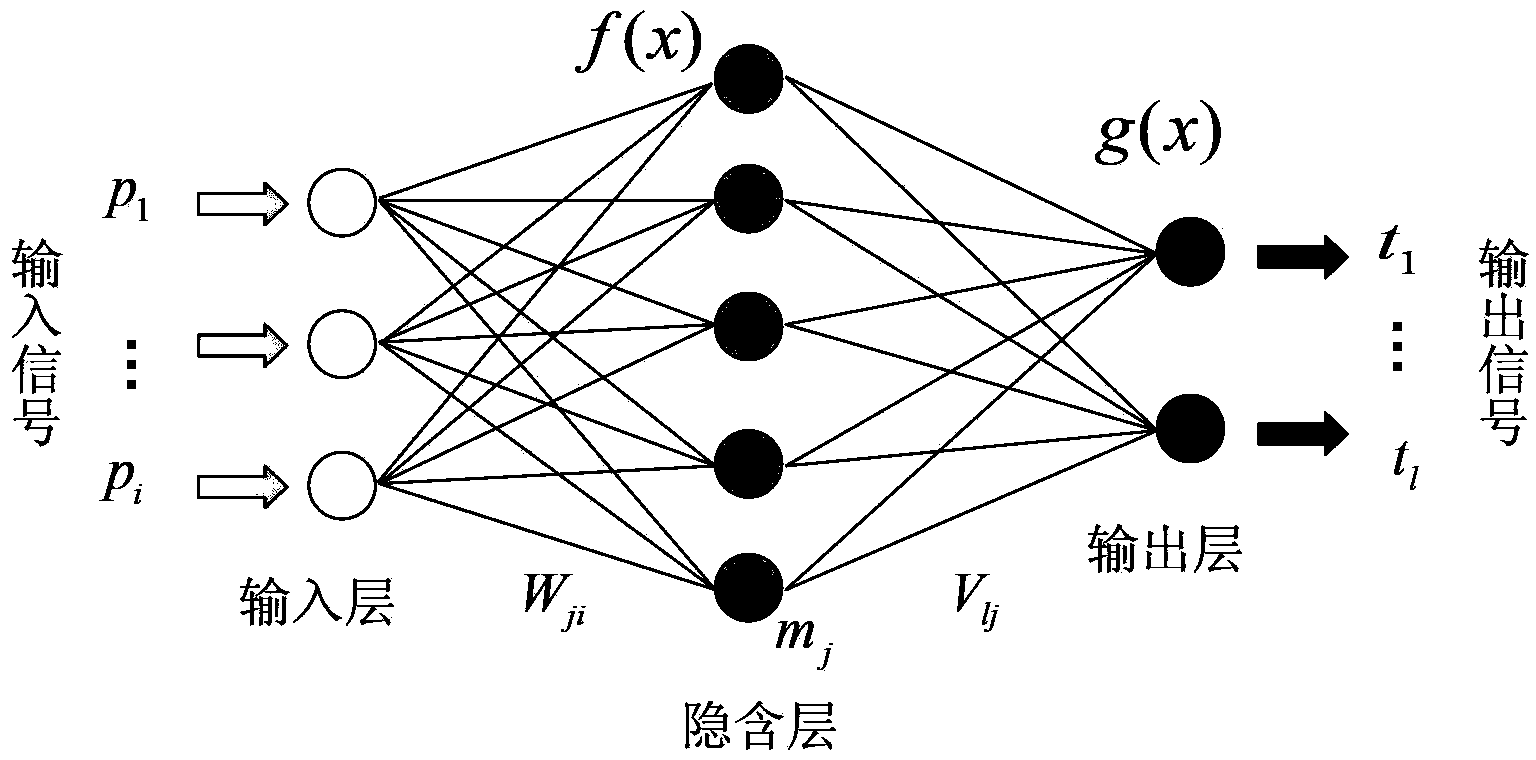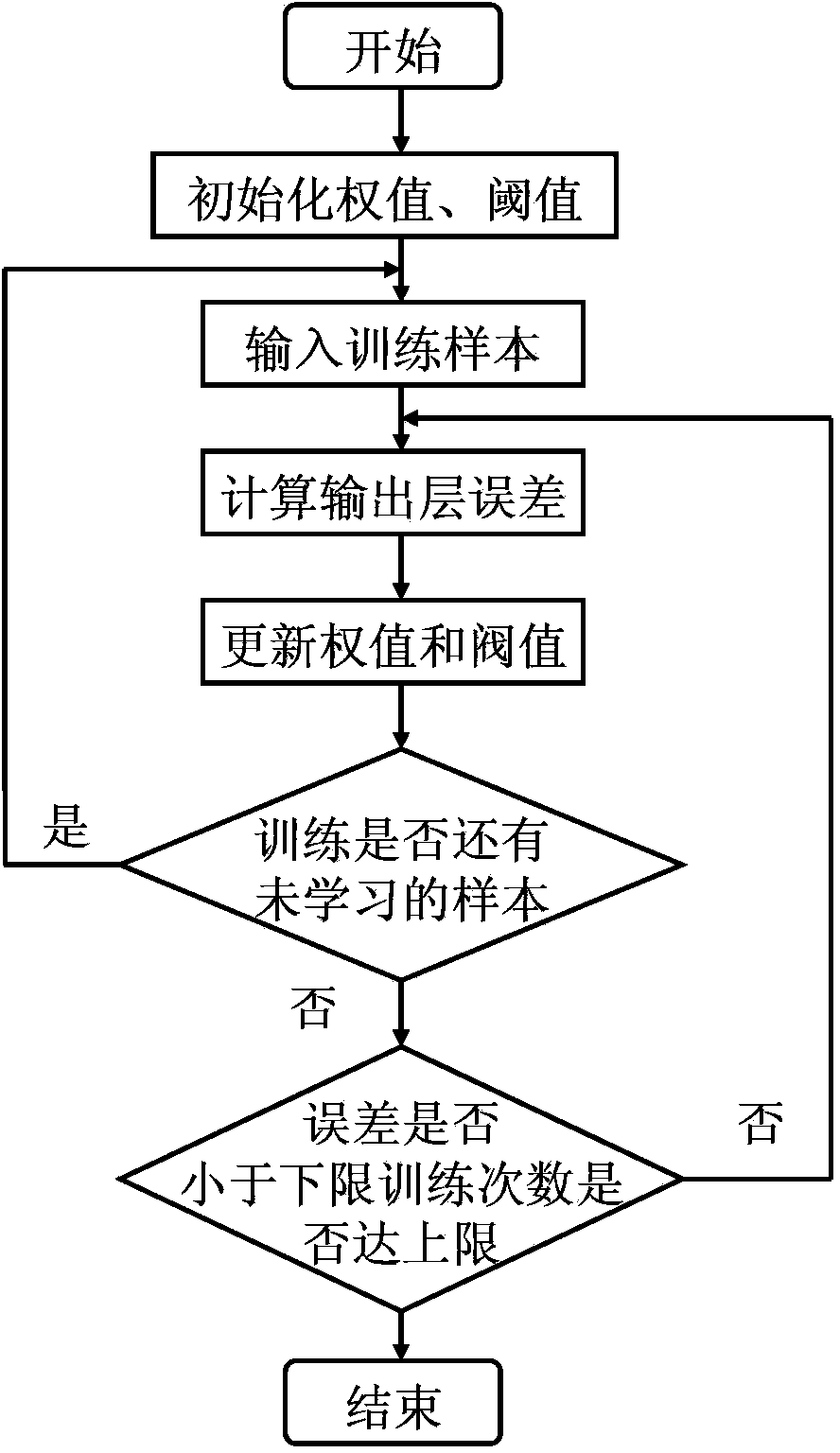Acoustic emission signal analytical method for automatically identifying damage mode of thermal barrier coating
A technology of acoustic emission signal and thermal barrier coating, which is applied in the direction of using acoustic emission technology for material analysis, processing the response signal of detection, etc.
- Summary
- Abstract
- Description
- Claims
- Application Information
AI Technical Summary
Problems solved by technology
Method used
Image
Examples
Embodiment
[0099] Taking the tensile failure process of thermal barrier coatings at room temperature as an example, the automatic pattern recognition of damage acoustic emission signals was carried out. Among them, the thermal barrier coating sample is prepared by plasma spraying method, the substrate material is Ni-based superalloy steel GH3030, and the bonding layer material is NiCr 22 al 7 Y 0.2 (wt.%), the ceramic layer material is ZrO 2 -8wt.%Y 2 o 3 , the thicknesses of the bonding layer and the ceramic layer are 100 μm and 200 μm, respectively. In the tensile test, a universal testing machine was used to load the sample, and the loading rate was 0.3mm / min. When loading, attach the acoustic emission sensor to both ends of the sample, collect the signal through the acoustic emission instrument, the sampling frequency is 2MHz, and the threshold is set to 38dB. The experiment carried out the acoustic emission detection of the tensile failure process of the base material without ...
PUM
 Login to View More
Login to View More Abstract
Description
Claims
Application Information
 Login to View More
Login to View More - R&D
- Intellectual Property
- Life Sciences
- Materials
- Tech Scout
- Unparalleled Data Quality
- Higher Quality Content
- 60% Fewer Hallucinations
Browse by: Latest US Patents, China's latest patents, Technical Efficacy Thesaurus, Application Domain, Technology Topic, Popular Technical Reports.
© 2025 PatSnap. All rights reserved.Legal|Privacy policy|Modern Slavery Act Transparency Statement|Sitemap|About US| Contact US: help@patsnap.com



